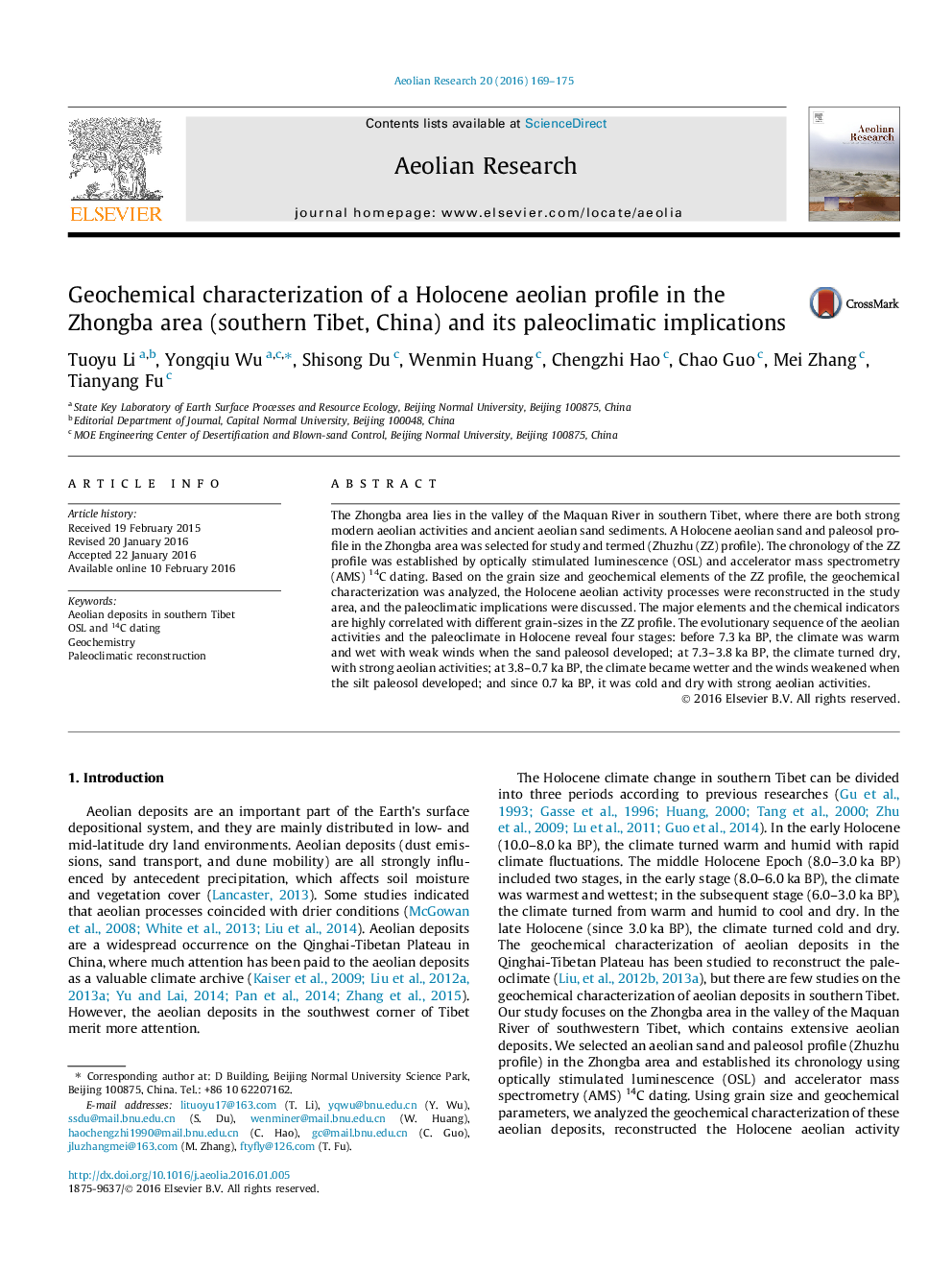| کد مقاله | کد نشریه | سال انتشار | مقاله انگلیسی | نسخه تمام متن |
|---|---|---|---|---|
| 6426264 | 1634108 | 2016 | 7 صفحه PDF | دانلود رایگان |

- The major elements and the chemical indicators are highly correlated with different grain-sizes in the ZZ profile.
- The major elements and the chemical indicators vary considerably among different grain size fractions in the ZZ profile. There are high correlations between fine population and CaO/MgO, Ti/Sr, CIA, which are relatively good paleoclimatic indicators in aeolian deposits area.
- In 3.8-2.5Â ka BP, the climate was optimum.
The Zhongba area lies in the valley of the Maquan River in southern Tibet, where there are both strong modern aeolian activities and ancient aeolian sand sediments. A Holocene aeolian sand and paleosol profile in the Zhongba area was selected for study and termed (Zhuzhu (ZZ) profile). The chronology of the ZZ profile was established by optically stimulated luminescence (OSL) and accelerator mass spectrometry (AMS) 14C dating. Based on the grain size and geochemical elements of the ZZ profile, the geochemical characterization was analyzed, the Holocene aeolian activity processes were reconstructed in the study area, and the paleoclimatic implications were discussed. The major elements and the chemical indicators are highly correlated with different grain-sizes in the ZZ profile. The evolutionary sequence of the aeolian activities and the paleoclimate in Holocene reveal four stages: before 7.3Â ka BP, the climate was warm and wet with weak winds when the sand paleosol developed; at 7.3-3.8Â ka BP, the climate turned dry, with strong aeolian activities; at 3.8-0.7Â ka BP, the climate became wetter and the winds weakened when the silt paleosol developed; and since 0.7Â ka BP, it was cold and dry with strong aeolian activities.
Journal: Aeolian Research - Volume 20, March 2016, Pages 169-175